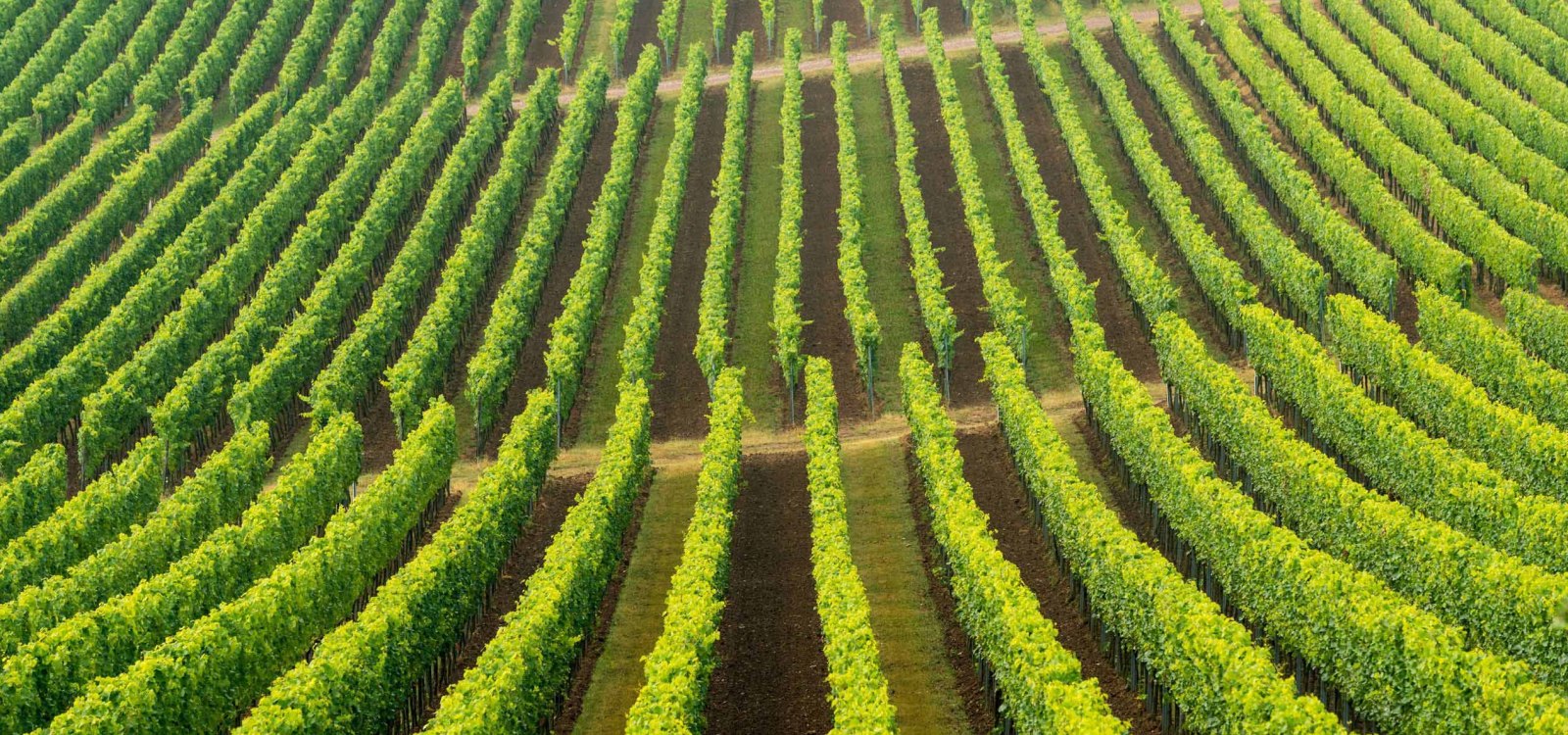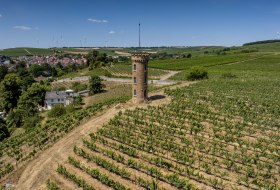
searchMenu



The location was mentioned in 1521 with the name "uff the Heiligenberg". Legend has it that the martyrs died here for the worship of St. Boniface.

The location was mentioned in 1331 with the name "uf der Heroes". Hell means a slight slope. In West Central Germany, this hall designation is very common.

Neo-Gothic chapels and a church roof made from vines A chapel on a mountain. That's how easy it is to explain some of the vineyard names. Is it not? It can be read that a chapel once stood on the mountain. Today, the chapel "Zum Heiligen Blut" - part of the neo-Gothic Villa Heiligenblut complex - can indeed be found on the edge of the single vineyard. However, it was only built in 1890. Built or planted even later: the "Weinkirche", a church made of vines. The romantic crenellated round tower was built in 1887 as a lookout tower and belongs…

The location designation is based on ecclesiastical property.

The word “Kehr” is a synonym for loop or serpentine. The plough turn as an interpretation for this can be ruled out, books say. The name of the vineyard is interpreted as a bend in the path. But don't all terrain forms have bends? Well then. The first mention of the site dates back to 1465. Different vines grow on loess, heavy clay and loam soils and limestone. The wines, especially Rieslings, are full-bodied and extremely dense, fruity and juicy. A vineyard hut with benches and a table offers a rest and a view.

Hiking, swinging and wine-tasting in the little garden The name of the vineyard goes back to the Welgesheim church or an old parish estate. The Lorsch Codex states that Welgesheim already had its own church in 1290. It is unclear why the garden was diminished to "Gärtchen" (English: little garden). After all, the single vineyard has 72 hectares - and is thus not one of the smallest single vineyards. Various vines grow on clay marl. Hikers and cyclists will find a vineyard swing, loungers and a wine table for groups. Ideal for picnics…

Once clay for potters, today premium wines for connoisseurs Once again the Middle High German: "Ule" means pot. The site was first mentioned in a document in 1382 with the name "an Ule erden". Why pot? Because potters found clay there. Today, the clay marl should stay where it is. And that is below the vines! Just as well as loess and limestone. Top Rieslings grow here: ripe aromas and fine exoticism on the nose; creamy and opulent on the palate. Due to the southern exposure, the grapes ripen early. Hikers enjoy the multitude of vineyard…

Over 50 vineyard cottages - and a single well cottage There is probably no village in Rheinhessen that could boast more vineyard houses: As many as 54 cottages adorn the vineyards of Westhofen. They were once shelters against the weather. In this particular one however, a spring was "protected" and a water reservoir was connected to it. The vineyard was first mentioned in a document in 1721 under the name "am brunnenhäusschen". The soils are characterised by clay marl with limestone and limestone rocks in the subsoil. “Terra…

Glorious wines play on the tongue here! No, for once this does not refer to the church (German: Kirche), which was often in possession of valuable land. The name has no religious reference, but means "hill covered with cherry trees". It was mentioned in a deed of donation in 1348 under the name "ab den Jierßbuhel". But it is not the cherry trees that catch the hiker's eye along the path today - but the cypresses. The slopes, which are up to 30 percent steep, are home to excellent wines that are internationally known. Limestone…

World famous and rich in stone A bog (German: Moor) in Rheinhessen? Certainly not. The site was first mentioned in a document in 1282 with the name "in loco marstein" in a deed of donation to the Cistercian monastery of Otterberg (Pfalz) and can be interpreted as a "marker stone". In other words, it is a boundary stone or a landmark. It is indeed stony here: one stone found during clearing weighed up to 3.2 tons. In the upper soil layer, there are clay marl soils with limestone inclusions, and massive limestone rock underneath. Mineral…
Rheinhessenwein e.V.
Otto-Lilienthal-Straße 4
55232 Alzey
E-Mail: info@rheinhessenwein.deRheinhessenwein e.V.
Otto-Lilienthal-Straße 4
55232 Alzey
E-Mail: info@rheinhessenwein.de